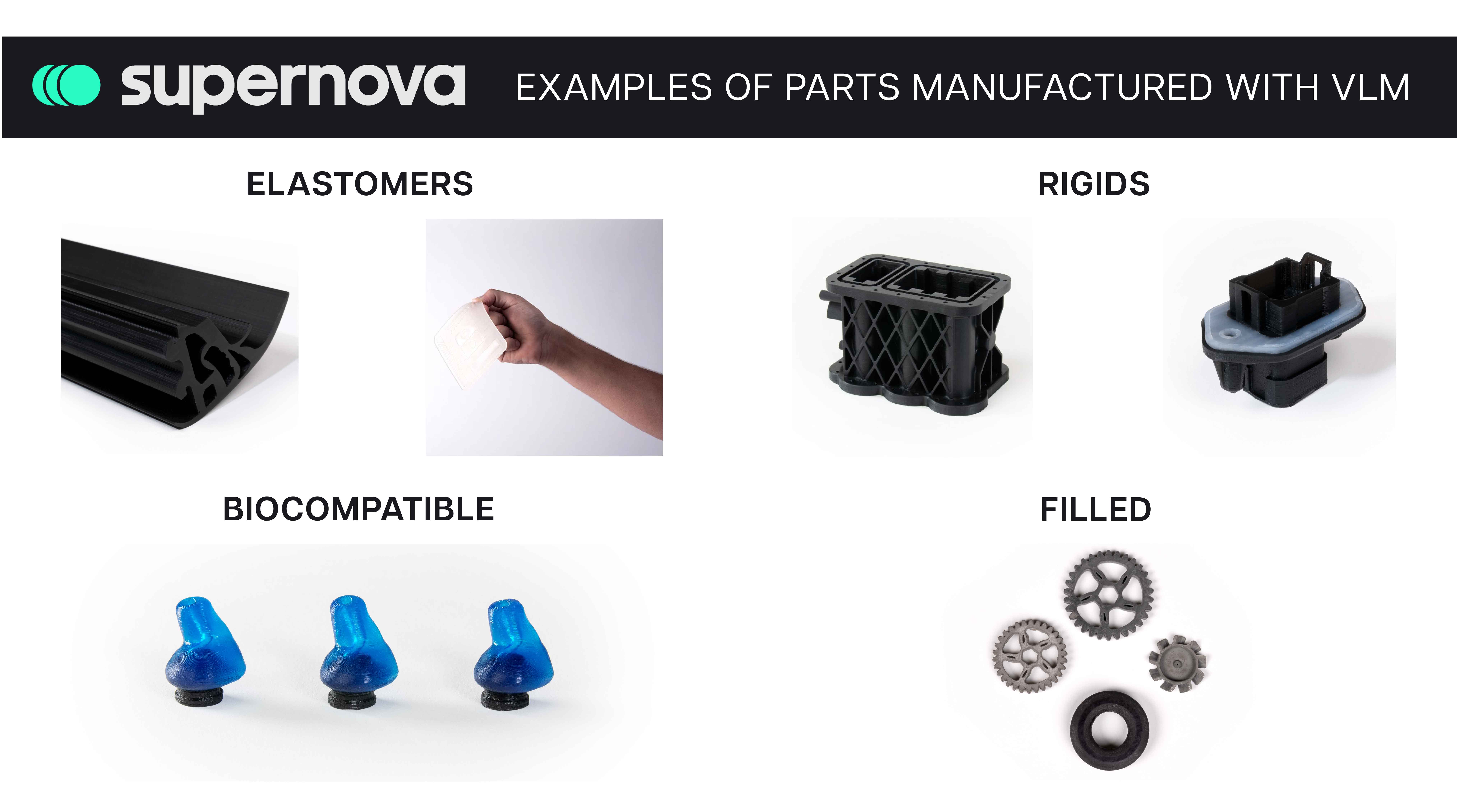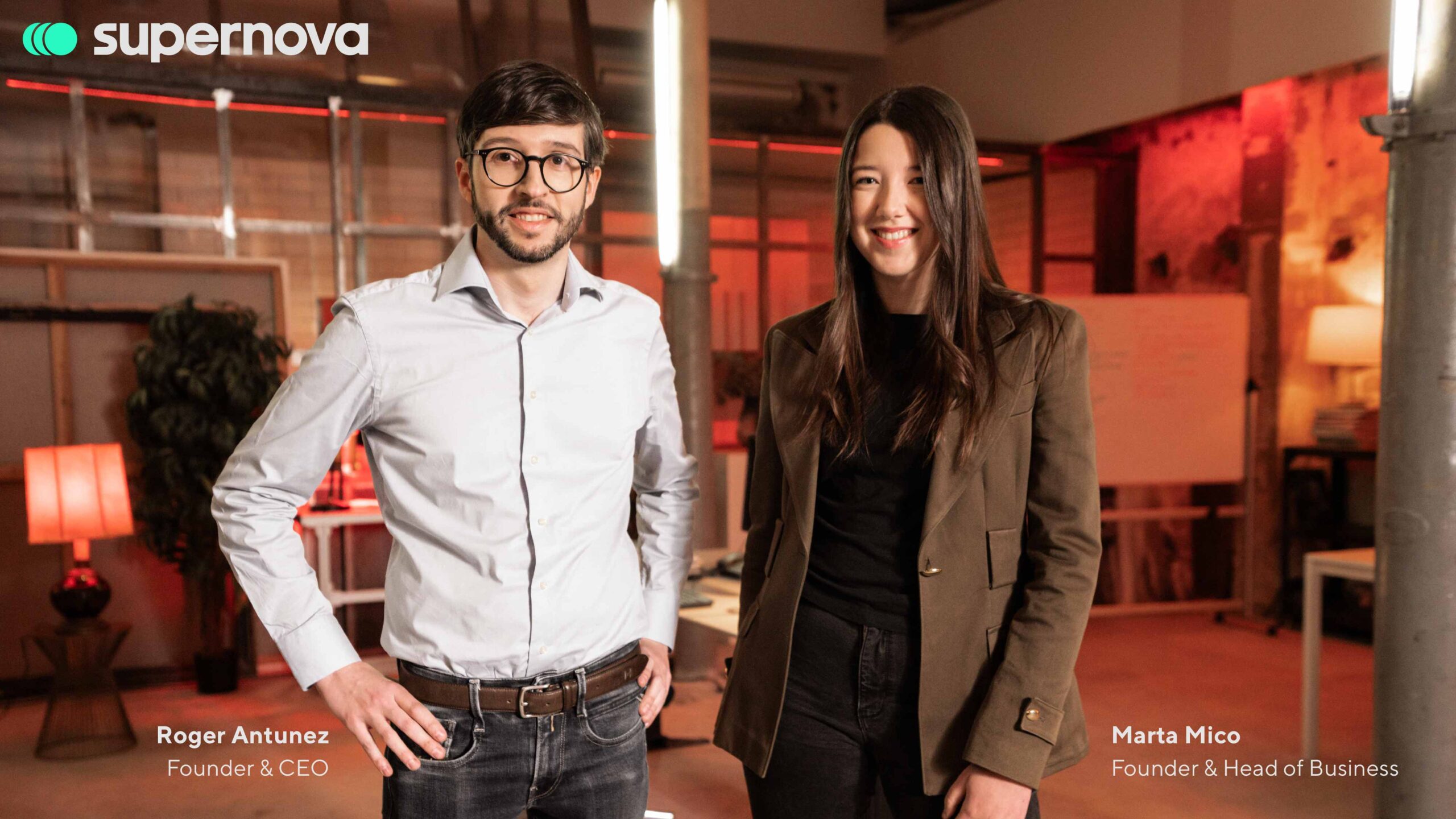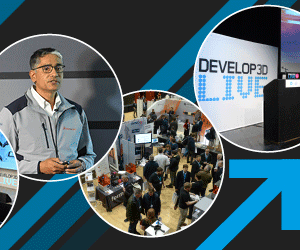Barcelona-based BCN3D, most well-known for its professional material extrusion systems, has recently announced the creation of a new entity, Supernova. The business is the result of a carve-out from BCN3D’s viscous lithography manufacturing (VLM) business unit, dedicated to the firm’s novel digital light processing (DLP) technique, unveiled in 2022.
Headquartered in Austin, Texas, and Barcelona, Spain, Supernova emerges not as a subsidiary but as a completely autonomous entity, distinct from BCN3D. This separation is a strategic decision allowing both companies to pursue their unique visions and objectives within the additive manufacturing (AM) industry.
How VLM Works
In the VLM process, a roller first applies resin onto a transparent film, which is then transferred to the print area. The build plate moves up to meet this layer of resin, setting the layer thickness. UV light then selectively cures the resin in the specified areas, forming the new layer of the print. After curing, the build plate lowers, peeling off the solidified layer and allowing any excess resin to be collected and reused.
VLM stands out from traditional DLP, stereolithography (SLA), and masked SLA methods as it can utilize resins up to 100 times more viscous, leading to enhanced mechanical properties and performance. The materials and UV light in VLM ensure a complete chemical crosslink between layers, resulting in consistent properties in all directions, even with layer thicknesses up to 200μm. The system’s high-precision light engine and advanced algorithms achieve an XY resolution of 23μm, contributing to a smooth surface finish.

VLM employs image flashing for layer creation, using a powerful light source to cure entire layers simultaneously, making print time constant regardless of the number of parts printed. This technology operates at room temperature, bypassing the limitations and material waste associated with managing high-viscosity resins at elevated temperatures.
Established Customers and Partners
Significantly, Supernova is kicking off operations with strong market traction, having garnered interest from over 500 companies through its Technology Adoption Program. This early success is further bolstered by strategic partnerships with leading industry players such as Puma, Saint Gobain, Orbea, Hutchison, and Prodrive. These collaborations underscore the industry’s recognition of Supernova’s potential to impact various sectors, including automotive, aerospace, consumer goods, and healthcare.
Perhaps most interesting is the vertical on Supernova’s site simply listed as “Batteries.” Given the specificity of this category, we might expect that the firm already has research underway for 3D printing batteries. We know that there are other AM companies attempting to improve lithium-ion battery performance, including Photocentric, which has its own version of DLP technology. It will be interesting to see what Supernova is ultimately able to demonstrate in this sector.
At the helm of Supernova is CEO Roger Antunez, formerly the General Manager of BCN3D. He is joined by co-founder Marta Mico, previously the VLM Head of Business Development at BCN3D, and Eric Pallares, the former CTO of BCN3D, who will serve as a Distinguished Technologist.

Supernova’s immediate focus is on material development targeting industrial applications and the industrialization of its product ecosystem. The company plans to install its first beta systems in 2024. Meanwhile, BCN3D, under CEO Xavi M. Faneca, will continue to concentrate on its core business of extrusion-based technologies, aiming to expand its leadership in the independent extrusion segment and grow its industrial offerings. This strategic divergence allows both BCN3D and Supernova to dedicate their resources and expertise to their respective areas.
Overall, BCN3D has maintained a steady reputation for its extrusion systems, but the current market may be difficult to navigate while focusing resources appropriately. By separating its VLM business, it may be easier to divvy up the finances while addressing different market segments.
Subscribe to Our Email Newsletter
Stay up-to-date on all the latest news from the 3D printing industry and receive information and offers from third party vendors.
You May Also Like
Game-Changing $115M for Aspect Biosystems’ Bioprinted Tech
Pioneering solutions for metabolic and endocrine diseases, Vancouver-based Aspect Biosystems raised $115 million in Series B funding to advance its bioprinted tissue technology. Led by investment firm Dimension, the round...
From Lab to Lifeline: Anthony Atala’s Vision for Bioprinting at WFIRM
Anthony Atala is transforming the future of medicine—not just with a scalpel, but with a bioprinter. As the director of the Wake Forest Institute for Regenerative Medicine (WFIRM), he’s pushing...
NSF-Backed $2.5M Grant Boosts Bioprinting Innovation in North Carolina
Fueled by a $2.5 million grant program, a handful of companies in North Carolina are using bioprinting to take on big challenges in regenerative medicine. The funding supports projects addressing...
3D Printing Webinar and Event Roundup: December 8, 2024
This week, we’ve got a number of webinars, on topics from 3D printing software and medical applications to printed electronics, PVC for industrial 3D printing, and more. There are also...




























